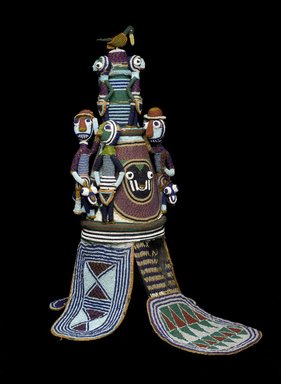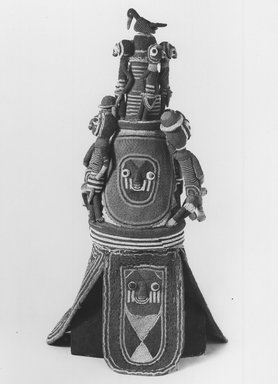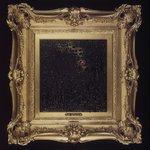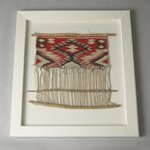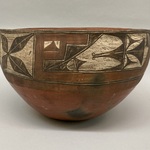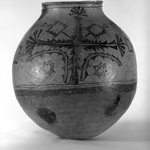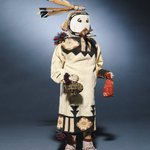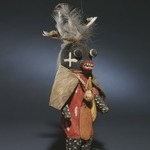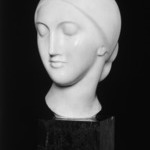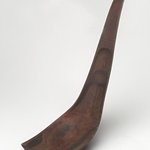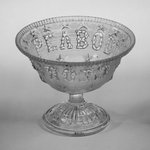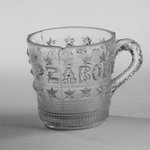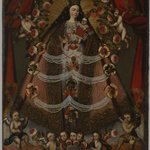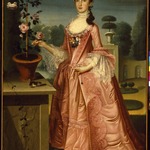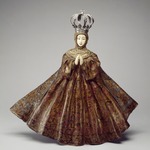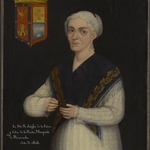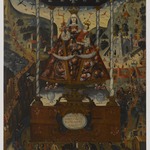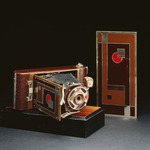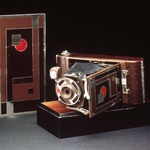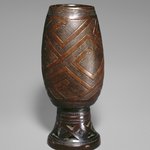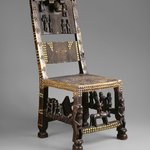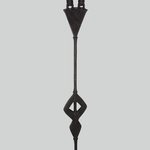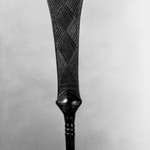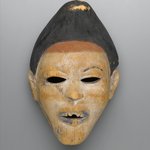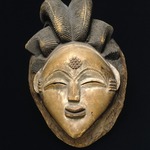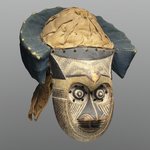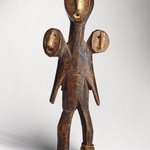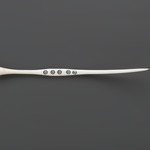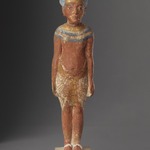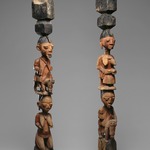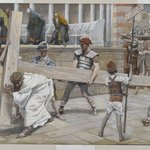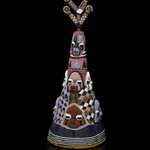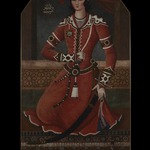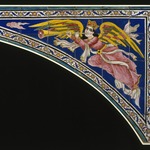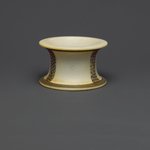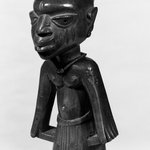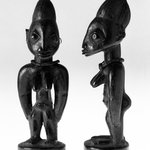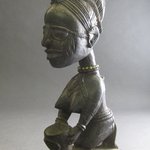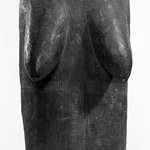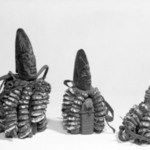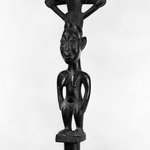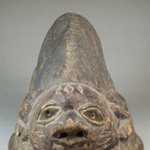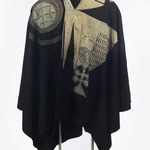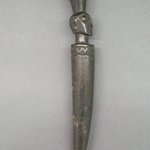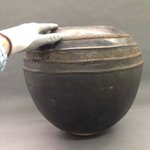Beaded Crown (Ade) of Onijagbo Obasoro Alowolodu, Ògògà of Ikẹ́rẹ́ (r. 1890-1928)
Arts of Africa
This beaded crown is the ultimate symbol of Yoruba kingship. Although the Yoruba have a long history of glassmaking, the beads used to make this crown would have been imported from the British in the late nineteenth century. At the time, glass beads were a signifier of wealth, and small European “seed beads” were particularly valued for their uniform size and color variety. Blue beads were particularly valuable because the color was not commonly found in natural materials.
Worn by an oba, or king, this crown with its beaded veil serves to depersonalize the man and instead emphasizes his office. It also protects onlookers from the danger of casting their eyes directly upon the divine presence of the oba.
MEDIUM
Basketry, beads, cloth
DATES
late 19th century
ACCESSION NUMBER
70.109.1a-b
CREDIT LINE
Caroline A.L. Pratt Fund, Frederick Loeser Fund, and Carll H. de Silver Fund
CATALOGUE DESCRIPTION
Conical basketry frame, covered with beaded cloth. Bead colors: green, yellow, amber, red, orange, white, royal and navy blue, and aqua. Top of crown surrmounted by dettachable bird. Second tier has four standing human figures, third tier has two frontal faces, two equestrian figures, and two standing figures. Attached beaded flaps at rim, with geometric patterns. Open work veil with frontal face.
CONDITION: Veil flap missing beads, as are beads on equestrian figures, left standing figures, and second tier standing figures. Flaps and cloth framework frayed.
Cinical basketry frame, covered by stiffened cloth base and embroidered with green, amber, yellow, red, orange, white, royal blue, aqua, and navy blue beads. Top of crown surrmounted by dettachable bird. Second tier of crown has four standing figures. Third tier has two frontal faces, two equestrian figures, two standing figures. Thress attached beaded flaps at rim, decorated with geometric designs. Forth flap, a veil, is open work with frontal face. CONDITION: Veil flap missing beads wherejoins crown proper. Beads missing from equestrian, left standing figure, and four figures of second tier. Flaps and cloth framework is frayed
MUSEUM LOCATION
This item is not on view
CAPTION
Yorùbá. Beaded Crown (Ade) of Onijagbo Obasoro Alowolodu, Ògògà of Ikẹ́rẹ́ (r. 1890-1928), late 19th century. Basketry, beads, cloth, 37 3/4 x 9 1/2 in. (95.9 x 24.1 cm). Brooklyn Museum, Caroline A.L. Pratt Fund, Frederick Loeser Fund, and Carll H. de Silver Fund, 70.109.1a-b. Creative Commons-BY (Photo: Brooklyn Museum, 70.109.1a-b_PS2.jpg)
IMAGE
overall, 70.109.1a-b_PS2.jpg. Brooklyn Museum photograph, 2007
"CUR" at the beginning of an image file name means that the image was created by a curatorial staff member. These study images may be digital point-and-shoot photographs, when we don\'t yet have high-quality studio photography, or they may be scans of older negatives, slides, or photographic prints, providing historical documentation of the object.
RIGHTS STATEMENT
Creative Commons-BY
You may download and use Brooklyn Museum images of this three-dimensional work in accordance with a
Creative Commons license. Fair use, as understood under the United States Copyright Act, may also apply.
Please include caption information from this page and credit the Brooklyn Museum. If you need a high resolution file, please fill out our online
application form (charges apply).
For further information about copyright, we recommend resources at the
United States Library of Congress,
Cornell University,
Copyright and Cultural Institutions: Guidelines for U.S. Libraries, Archives, and Museums, and
Copyright Watch.
For more information about the Museum's rights project, including how rights types are assigned, please see our
blog posts on copyright.
If you have any information regarding this work and rights to it, please contact
copyright@brooklynmuseum.org.
RECORD COMPLETENESS
Not every record you will find here is complete. More information is available for some works than for others, and some entries have been updated more recently. Records are frequently reviewed and revised, and
we welcome any additional information you might have.
